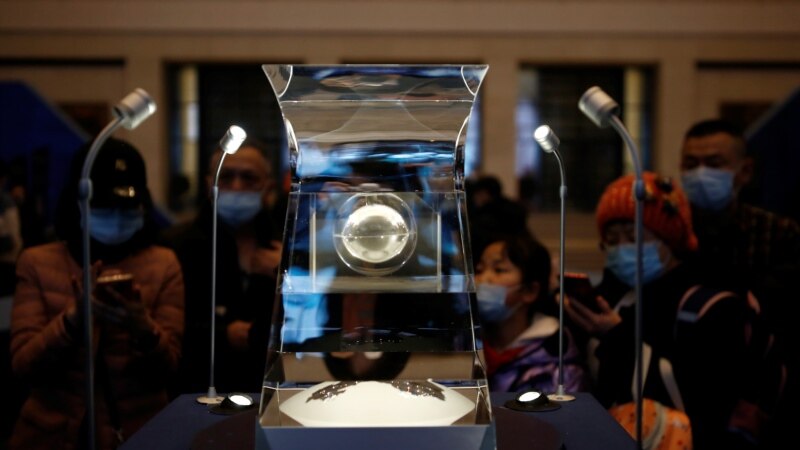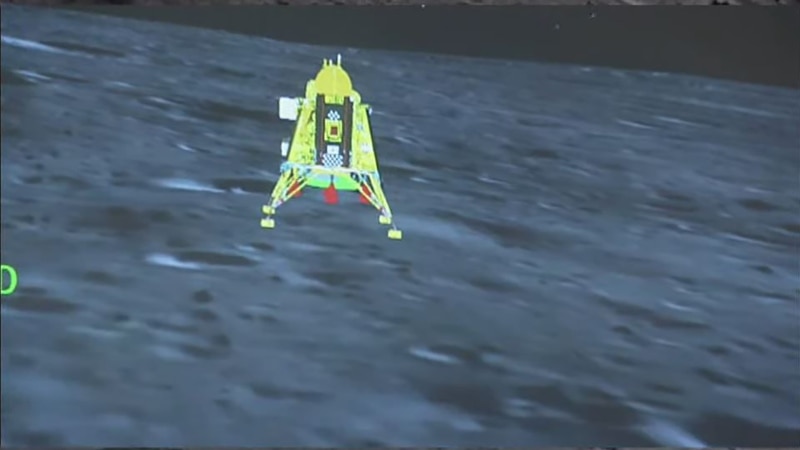
China to Launch Spacecraft to Collect Material from the Moon
China’s space agency is making final preparations to launch a spacecraft to the moon to collect material from the lunar surface.
If the effort is successful, it will be the first time in more than 40 years that any nation has brought back samples from the moon.
The unmanned spacecraft is named Chang’e 5 after the ancient Chinese female god of the moon. It is set to launch early Tuesday aboard a Long March-5Y rocket. It will blast off from China’s Wenchang launch center on the southern island of Hainan. The spacecraft is expected to take three days to reach the moon.
The mission will make China only the third nation to collect lunar samples, following the United States and the Soviet Union. The last such mission happened in 1976, when an unmanned Soviet spacecraft collected 170 grams of moon material.
America’s Apollo program - which first put humans on the moon - landed 12 astronauts over six flights from 1969 to 1972. The astronauts collected and brought back 382 kilograms of rocks and soil.
The Chinese mission aims to drill down 2 meters into the moon’s surface and collect at least 2 kilograms of rocks and other material, the U.S. space agency NASA says.
The Chang’e-5 spacecraft includes four different modules that will work together to complete the mission.
After the materials are collected by the lander, they will be placed in the spacecraft’s ascender. The ascender is designed to lift off from the moon and link up with a “service module.” The materials will then be moved to a return vehicle for the trip back to Earth.
Scientists say the Chang’e-5 mission may help answer questions about the moon’s past volcanic history. It could also provide data about when the moon might have lost its magnetic field.
The spacecraft’s time on the moon will be limited to about 14 Earth days. This is because it lacks heating equipment to operate for long periods in the moon’s freezing environment.
Joan Johnson-Freese is a space expert at the U.S. Naval War College. She told The Associated Press the technical complexity of Chang’e 5 is “remarkable in many ways.” The effort demonstrates China’s ability to develop and successfully carry out “sustained high-tech programs,” she said.
The ability to collect samples from space is increasingly valuable, astronomer Jonathan McDowell told the AP. He is with the Harvard-Smithsonian Center for Astrophysics. McDowell said other countries may look to China’s experience to help with their plans to collect material from asteroids, or possibly even Mars.
While he described China’s new mission as “challenging,” McDowell said the country had already successfully landed twice on the moon with its Chang’e 3 and Chang’e 4 missions.
In July, China became one of three countries – after the United States and the Soviet Union - to launch a mission to Mars. China’s unmanned Tianwen 1 spacecraft is expected to arrive at Mars around February 2021. Once it begins orbiting the Red Planet, an explorer will attempt to land on Mars to collect data on the planet’s surface and search for signs of water.
I’m Bryan Lynn.
The Associated Press and Reuters reported on this story. Bryan Lynn adapted the reports for VOA Learning English. Hai Do was the editor.
We want to hear from you. Write to us in the Comments Section, and visit our Facebook page.
Words in This Story
sample – n. a small amount of something that represents what it is like
mission – n. a flight by an aircraft or spacecraft to perform a specific task
drill – v. to make holes in hard materials with a machine
module – n. a part of an object that can operate alone, especially a part of a spacecraft
remarkable – adj. very unusual or noticeable in a way that you admire
sustain – v. to cause or permit something to continue for a period of time
asteroid – n. objects made of rock and metal which orbit the sun, but are smaller than planets
challenging – adj. difficult in a way that is usually interesting or enjoyable
Share this article:
This article uses material from the VOA Learning English article, and is in public domain. Images and videos are available under their respective licenses.


